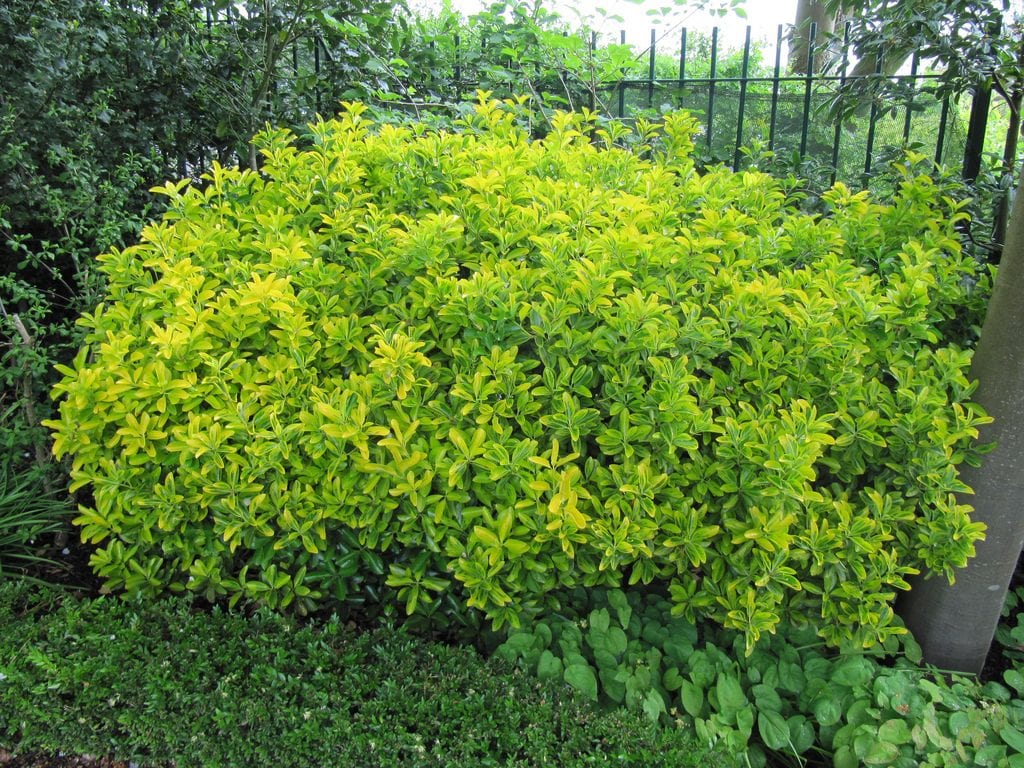
It is one of the most popular evergreen saplings / shrubs. Its easy cultivation and maintenance, as well as its resistance to pruning and disease, make it a great plant to have in almost any type of garden. Your name? Eponymous.
We didn't want to have a gardening blog without writing your complete file for you, so here it is.
Origin and characteristics of Euonymous japonicus
Our protagonist is an evergreen plant native to Japan, Korea and China whose scientific name is Euonymus japonicus, although it is popularly known as Japanese spindle, Japanese bonetero, evonivo or evonymous. It reaches a height of 2 to 8 meters, although it is normally not allowed to grow more than 3m.
Its leaves are oval, 3 to 7 cm long, and have a finely rounded margin. These are green in color, but they can also be variegated (green and yellow). The flowers are about 5mm in diameter, and are greenish-white in color. The fruit is green, and inside we find pink seeds.
The growth rate of Euonymus japonicus It's fast, but not too fast. What I mean by this is that can grow at a rate of 20 or 30 centimeters per year, depending on the weather.
Varieties
There are above all two that are especially popular:
-
Euonymus 'Aurea': which has leaves more yellow than green.
-
Euonymus 'Microphyllus': with small leaves.
Euonymus japonicus: care
If you dare to have a copy, we recommend you take care of it as follows:
Location
It is important to be outside, in full sun. It can also be in semi-shade as long as it receives more hours of light than shade.
Earth
- Flower pot: if you want to have a Euonymus japonicus in a pot, you must put a universal culture substrate (on sale here) mixed with 30% perlite, or mulch.
- Garden: it is indifferent as long as it has good drainage.
Irrigation
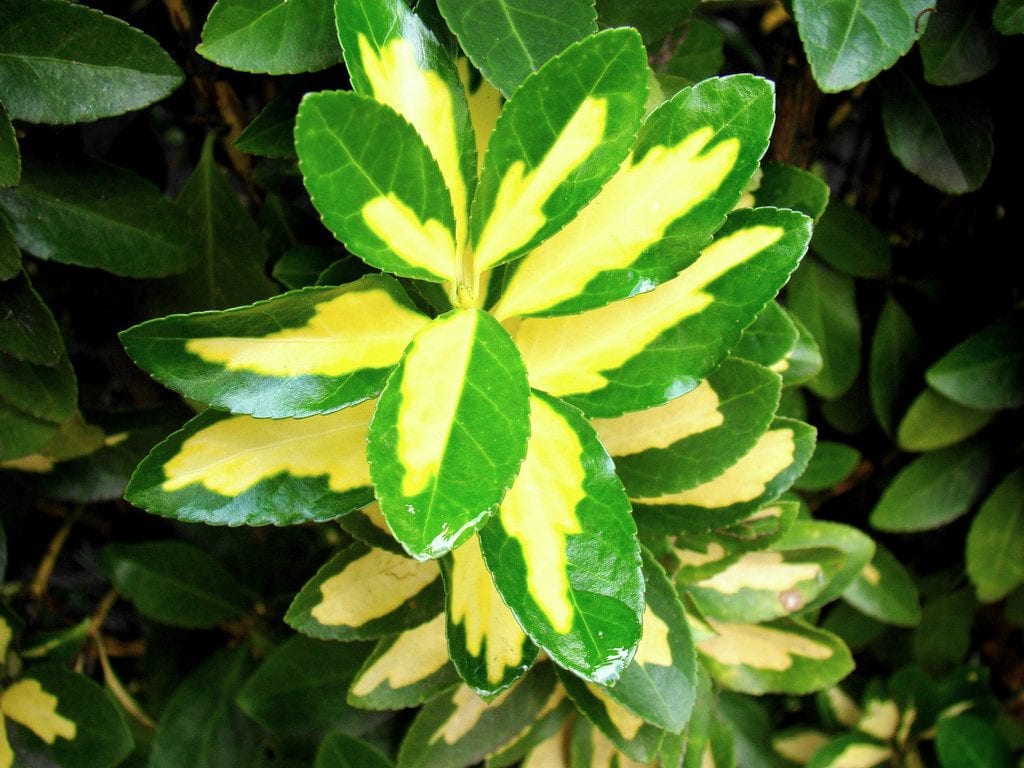
The frequency of irrigation will vary depending on the season of the year, as well as the climate of the area. Still, to give you an idea, it is advisable to water it 3-4 times a week during the warmest season of the year, and every 4-5 days the rest.
It is highly recommended to water rainwater or lime-free water, so if you only have very hard water -with a pH of 8 or higher-, you should add a tablespoon of vinegar to 5l of water. You can find out what the pH of the water is with some measuring strips that are sold in pharmacies for this purpose.
Subscriber
From early spring to late summer you must pay your ebonimus once a month with ecological fertilizers, for example with guano which is very rich in important nutrients such as nitrogen. In the case of having it in a pot, use liquid fertilizers so that the soil does not have problems filtering the water.
Multiplication
The euonymous plant is multiplied by seeds in autumn or by cuttings in spring. Let's see how to proceed in each case:
Seeds
The step by step to follow is the following:
- The first thing to do is fill a tupperware with vermiculite.
- Afterwards, the seeds are placed - without interposing them - and covered with more vermiculite.
- Then, sprinkle with copper or sulfur to prevent the appearance of fungus.
- Next, it is watered - better with a sprayer - avoiding waterlogging.
- The next step is to cover the tupperware with its lid, and place it in the fridge (where you put the milk and others).
- From then until spring, the tupperware should be removed once a week and opened to renew the air.
- In spring, the seeds will be sown in a pot with universal cultivation substrate placed outside, in semi-shade.
Thus, will germinate throughout the spring.
Cuttings
The way to proceed is as follows:
- The first thing to do is to cut a hardwood cutting with previously disinfected scissors.
- Afterwards, the base is impregnated with homemade rooting agents or with liquid rooting hormones.
- Then a pot is filled with universal growing medium, watered, and a hole made in the center.
- Then the cutting is planted.
- Finally, the filling is finished and the pot is placed outside, in semi-shade.
Thus, will emit its own roots after 3-4 weeks.
Pests
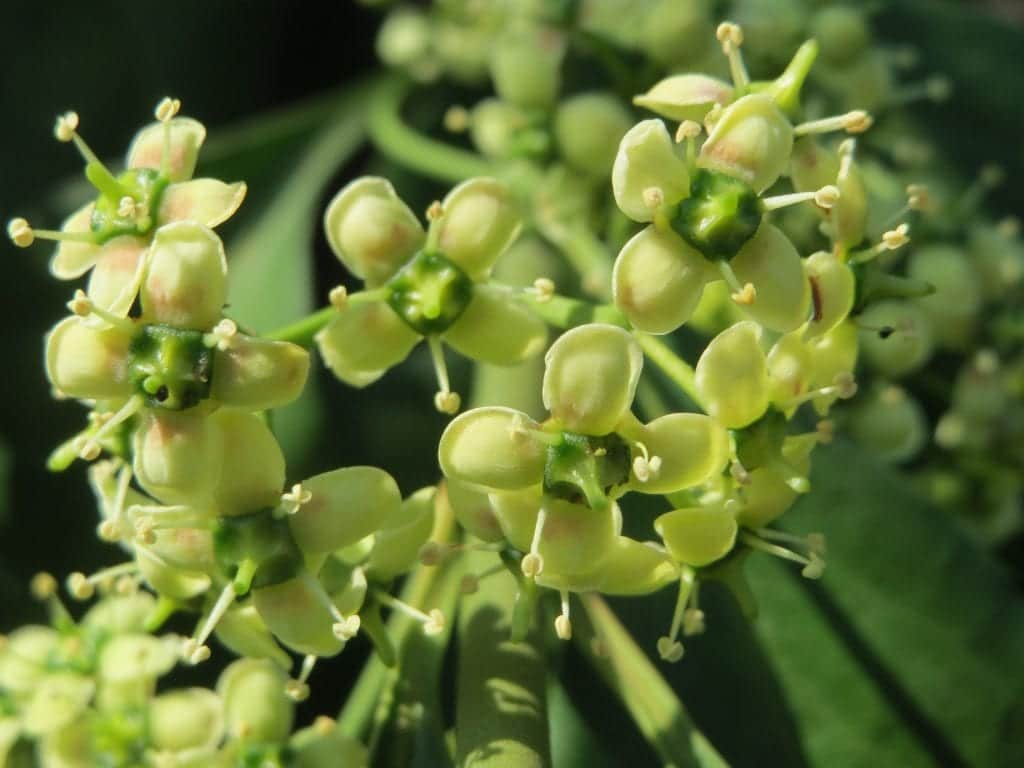
The euonymous plant is very resistant, but if the conditions are not right it can be affected by the following pests:
- Mealybugs: they can be cottony or limpet type. In any case, they perch above all on the youngest stems. They can be removed by hand, with an anti-cochineal insecticide or with (the dose is 35g per 1l of water).
- Aphids: they are parasites that measure about 0,5cm and are green, brown or yellow in color that feed on the cells of the leaves and flowers. They can also be removed with diatomaceous earth, or controlled with .
- Spinning caterpillars: they are caterpillars of the Hyponomeuta cognatellus, which is a butterfly whose larvae weave silky nests on the leaves. It is treated with insecticides.
diseases of the Euonymus japonicus
When overwatered, the following may appear:
- Powdery mildew: it is a fungal disease (fungi) that is manifested by the appearance of a white powder on the leaves. It is frequent in eponyms that are in shadow. It is treated with fungicide.
- Gloeosporium evonymi: it is a fungus that produces spots on the leaves that are reddish first and then become brownish until they fall. It is treated with copper oxychloride.
- Phyllosticta evonymicola: it is a fungus that produces rounded leaf spots. It is also treated with fungicides.
Pruning
At the end of winter, dry, diseased, weak or broken stems must be removed from the Euonymus japonicus. You can take the opportunity to cut the rest of the stems, giving them the shape you want. Of course, important, use pruning shears previously disinfected with pharmacy alcohol or with a few drops of dishwasher.
Rusticity
Withstands cold and frost up to -18ºC.
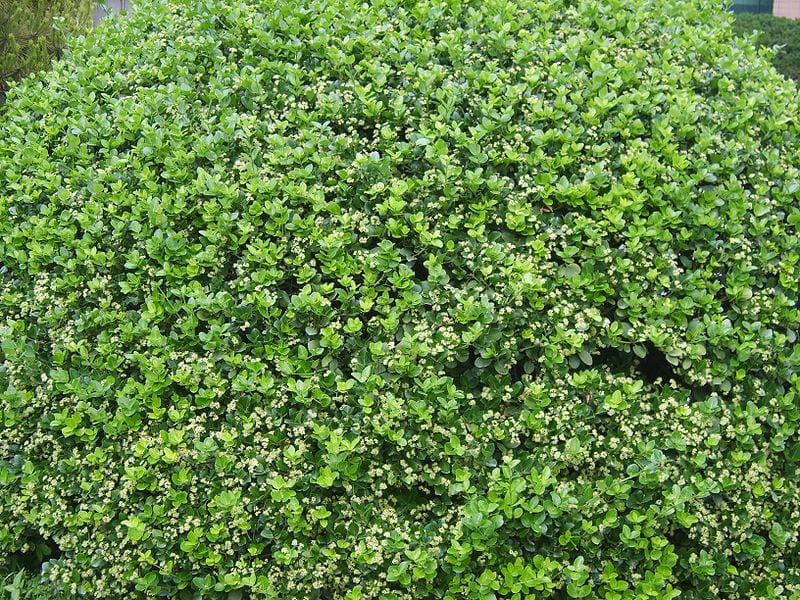
What did you think of the eponymous?

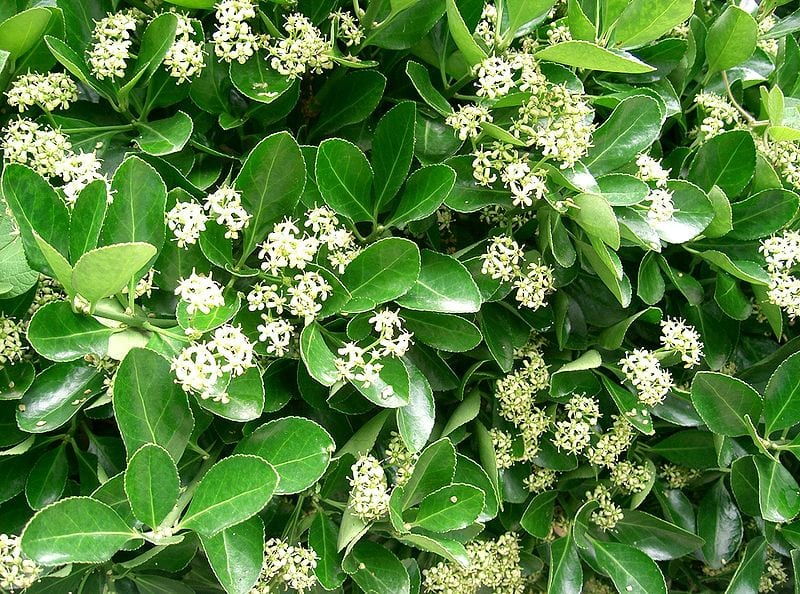












Beautiful plant. I bought it very small and in two months it is beautiful, I would like to know if I can transplant it because I placed it in one place and it came so big that it covers the other ones behind- Thank you
Hi Susi.
Yes, you can move it around in late winter, digging deep trenches around the plant to be able to extract it with as many roots as possible.
Regards!
Very good
We are glad you liked it 🙂
Excellent information. The clearest I have found. Thanks for the help.
Hi Chesana.
Great, we are glad to hear that you liked it. Greetings!
Hello, I want to make a fence of approximately 8 meters straight line with an ele of 1,50 meters, which reaches a height of 50/60 cm, the plant is useful for what I want, how long does it have to grow? Thanks
Hello Roberto.
Yes, it is useful for low / medium hedges. It grows at a good rate, about 20-30 centimeters per year approximately.
Another interesting plant for what you want is the Buxus sempervirens. I leave you his file here.
Regards!
Hi good day.
I have two evonimos of different types, in large pots.
The two of them are drying the leaves by leaps and bounds.
They have been in an area with a lot of sun and heat, (perhaps we have watered them excessively).
Can I prune them in August?
What should I do to get them back?
Hi Javier.
Dry leaves can be due to sun exposure without having acclimatized before, and / or excessive watering.
My advice is that you put them in semi-shade, and water them about 2, or 3 times a week until autumn arrives, which should be less.
Pruning is usually done in late winter, but can also be done in fall. Now in summer it is counterproductive, since they would lose a lot of sap and could die.
If you have doubts, tell us.
Greetings.
Good morning,
I have a golden evonium japonica .. however the color of its leaves is greyish .. it has no powdery mildew or anything like that, but it looks like a dull color… as if lifeless… I have treated it with a multipurpose fungicide and fertilizer for green plants .. but it does not improve especially…. Thanks a lot.
Hi Esther.
Do you have it outside the home or inside?
From what you count, it seems that it lacks color because it does not have much (solar) light. Can be?
These plants must be kept outside, in a sunny place. It is also important not to over water, even if you have a plate under it, you must remove the excess water.
Well, you tell us.
Regards!
Hola!
I have it on a terrace in full sun facing south with direct sun .. I really don't know what else to do! And the irrigation .. well I will space it more just in case, usually the water does not come out from underneath although the earth is wet ..
Hello again.
Well then, I would tell you to water until it comes out through the holes, but reduce the frequency of watering a little.
Now it is a little late, but if in your area there are no frosts or they are weak (or late, March / April), you can fertilize it for the last time, with the fertilizer for green plants if you have it on hand, or universal.
Regards!
Hello friends.
I have several Evonimo hedges and year after year the green leaves are outnumbered by the yellow ones. Why does this happen?
Thank you very much
Hello Miguel Angel.
Do you have it in shadow? Sometimes variegated plants (with green and yellow leaves) lose their yellow due to a survival issue: the more green surface they have, the easier it will be to photosynthesize. In the shade they receive less light, of course, so they need more chlorophyll, that is, more green leaves to produce the same amount of food as when they were in the sun.
If it is not that, or you have doubts, write me 🙂